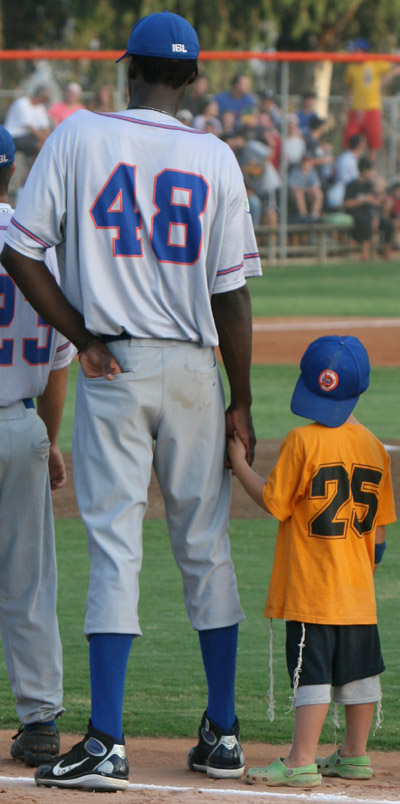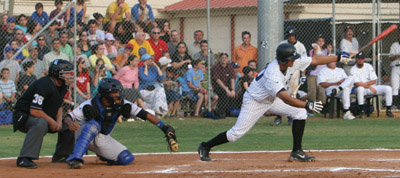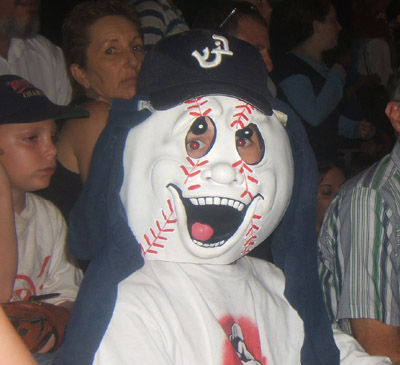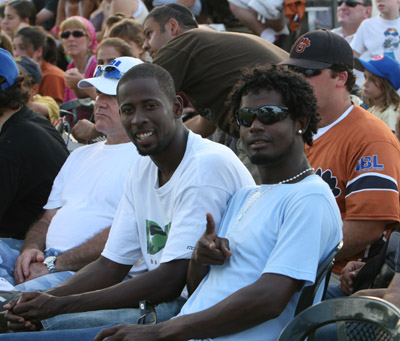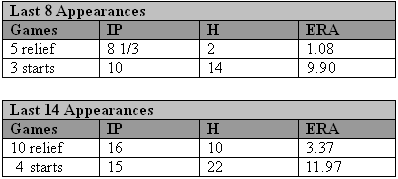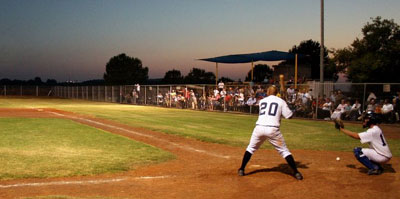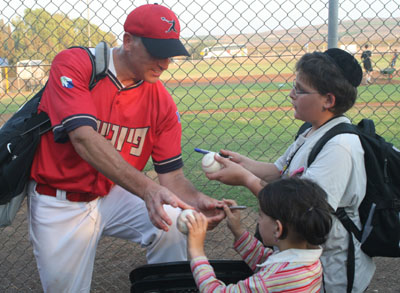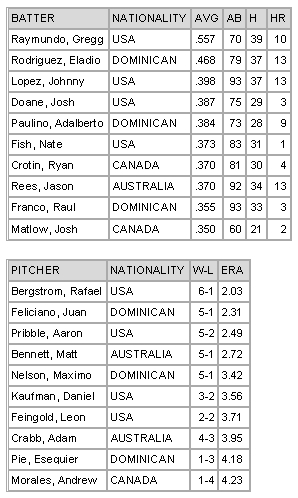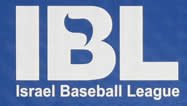
Juan Feliciano
After the championship game last night the league handed out awards to the top performers in the league. The award for best pitcher in the IBL in 2007 went to Juan Feliciano (JF). JF is a great pitcher. He throws a variety of pitches, has good movement on his pitches, hits his spots, changes speeds and hits 93 on the radar gun. He also played in the major leagues of Japan, he is an elite pitcher. Now that I have given JF his deserved respect I can say with a clean conscious that I believe that Aaron Pribble (AP) should have received the award or at least shared it with JF. The best batter award was shared between Gregg Raymundo and Eladio Rodriguez, so the idea of sharing an award is not unprecedented.
AP is a pitcher on the Tel Aviv Lightning. He is a 6’5” lefty who pitched for the division one University of Hawaii and went on to pitch successfully in the pros. He throws a fastball in the 80’s (tops out at around 87), has a great changeup, superb command of his pitches and he is smart. He is Glavine Lite.
Here is a why I believe he was the best pitcher in the IBL this season. First, every statistic has its shortcomings. They are all flawed in isolation. They gain value when viewed in context and support of other stats. But some stats are more valuable than others and often the baseball community attaches high value to weak stats and low value on more meaningful stats. For example a pitchers win loss record is pretty meaningless to me. A weak pitcher on a great hitting team can end up with a good record and a strong pitcher on a weak team can end up with a losing record (Andrew Morales had a 4.47 ERA, eleventh best in the IBL and had a 1-6 record). Wins and losses are the ultimate statistic in evaluating a team, not a pitcher. The good news is that JF and AP both won 7 games and though AP lost 2 and JF lost 1 there won lost records should not differentiate there performances.
ERA is not perfect stat by any means but generally speaking it is a valuable measure of pitcher effectiveness. AP led the league with a 1.94ERA and JF had a 1.97ERA. Both great and very similar so again not a differentiator.
My guess is that JF was given the award because he gave up only 28 hits in 50 innings while striking out and impressive 73. AP gave up 44 hits in 60 innings and struck out 57. Opposing hitters batted a mere 160 versus JF. Against AP batters batted a meager 203 which is extremely low but JF’s 160 is absurdly low. This is a differentiator. The 73 strike outs in 50 innings is also incredible and though AP had 57 strikeouts in his 60 innings it is simply not as sexy as 73.
Strikeouts and even more so strikeout to walk ratio can be a valuable scouting tool for determining if a pitcher will succeed. But once a pitcher has proven he can succeed without the gaudy strikeout numbers (in which case walks must be low) it becomes an exciting stat but not one that should be given much weight. Interestingly, AP’s k/bb ratio is slightly better than JF’s.
So why am I on a “give it to Pribble” campaign? Because AP faced significantly stiffer competition than JF and emerged with a slightly better ERA. Over 45% of the at bats against AP were facing Bet Shemesh a team with a 294 batting average and an extra base hit every 9 at bats. In the 28 innings against Bet Shemesh Aaron yielded only 3 earned runs (0.96ERA) gave up only 19 hits and beat them all four times he faced them. JF never had to face Bet Shemesh, the next best hitting team he had to face was the Tel Aviv Lightning. Tel Aviv batted 282 and hit an extra base hit every 15 at bats. 36.6% of the at bats that JF faced were against Tel Aviv. In contrast to AP’s domination of Bet Shemesh, JF gave up 15 hits in the 16 innings against Tel Aviv and yielded a very good but not dominating 7 earned runs (3.93 ERA).
Furthermore, only 17% of the at bats against AP were from the two weakest hitting teams (Raanana and Petah Tikva) as opposed to JF who faced them on 28% of the at bats against him. JF never gave up a run to either Petah Tikvah or Raanana, AP gave up one run to Petah Tikvah, none to Raanana.
Lastly, Leaguewide AP faced a 277 batting average while JF faced a 270 batting average.
So, who was the most effective pitcher in the IBL this season? I say Aaron Pribble, though I could make a good argument for both Juan Feliciano and Aaron Pribble to share the honor.
